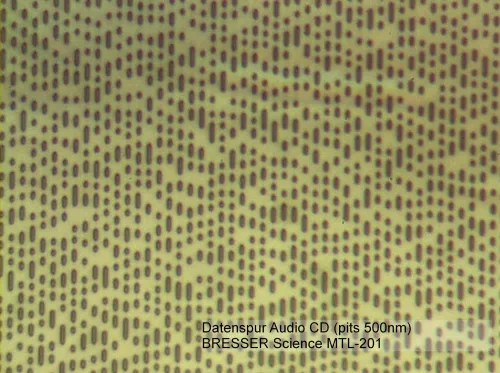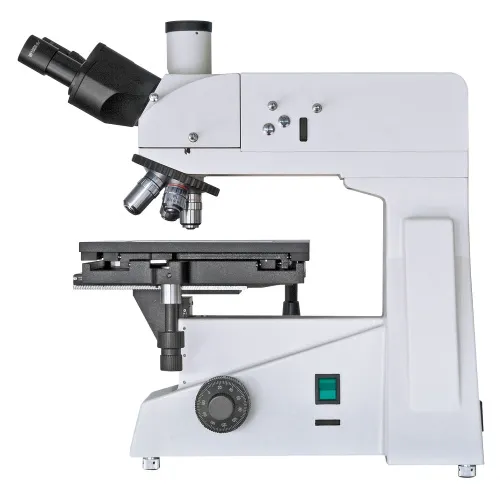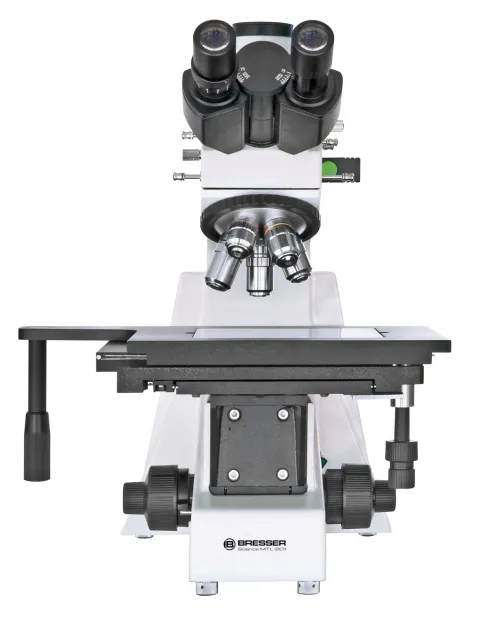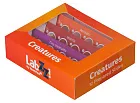Bresser Science MTL-201 50-800x Microscope
Trinocular head. Magnification: 50x–800x
| Product ID | 62569 |
| Brand | Bresser GmbH, Germany |
| Warranty | 2 years |
| EAN | 4007922150246 |
| Package size (LxWxH) | 53x50x59 cm |
| Shipping Weight | 19.7 kg |
The Bresser Science MTL 201 is a special reflected light microscope, which allows to observe non-transparent surfaces at higher magnifications (50x-800x). This solid designed instrument is ideal for working in metallography (e. g. microscopy of polished samples of metals or alloys), mineralogy, precision engineering and electronics. It is suitable for scientific research, teaching demonstration and industrial production (e.g. quality controlling). According to its purposes, the MTL 201 is equipped with a large stage (250 mm x 230 mm), which can be moved coarsely by a quick adjustment lever and finely by a transverse and a longitudinal knob. The focuser has coarse and fine drive (coaxial; circa 70 µm/ full turn). The illumination is done by a halogen lamp (20 W) with a dimmer. The light comes through the objective from above onto the sample. There are a field diaphragm, which can be centered, some filters (yellow, green, blue, ground glass) and a polarizer/analyzer combination. The fivefold nosepiece is equipped with planachromatic DIN objectives (5x, 10x, 20x, 40x, 80x). The trinocular head bears two 30° inclined ocular tubes and the photo tube. The oculars (with 10x wide field lenses) have diopter and eye relief adjustments. The photo tube allows for digital imaging, e. g. with an optional available PC eyepiece. Further optional accessories: Eyepiece (WF16x), dividing eyepiece (WF10x), planachromatic objective (50x).
Features:
- Metallurgical microscope
- Trinocular Comfortable binocular view, 30° declined
- Integr. dimmer
- Generously dimensioned object plate
- Adjustable eye relief
- Diopter Adjustment
The kit includes:
- Microscope
- Eyepieces (2x WF 10x)
- Objective lenses (5x, 10x, 20x, 40x, 80x)
- Coaxial stage
- Colour filters (green, blue, yellow, matt)
- Dust cover
- Power cable
| Product ID | 62569 |
| Brand | Bresser GmbH, Germany |
| Warranty | 2 years |
| EAN | 4007922150246 |
| Package size (LxWxH) | 53x50x59 cm |
| Shipping Weight | 19.7 kg |
| Microscope head type | trinocular |
| Head inclination angle | 30 ° |
| Magnification, x | 50 — 800 |
| Eyepiece tube diameter, mm | 23.2 |
| Illumination | halogen |
| Brightness adjustment | ✓ |
| User level | professionals |
| Application | for applied research |
| Pouch/case/bag in set | dust cover |
and downloads
We have gathered answers to the most frequently asked questions to help you sort things out
Find out why studying eyes under a microscope is entertaining; how insects’ and arachnids’ eyes differ and what the best way is to observe such an interesting specimen
Read this review to learn how to observe human hair, what different hair looks like under a microscope and what magnification is required for observations
Learn what a numerical aperture is and how to choose a suitable objective lens for your microscope here
Learn what a spider looks like under microscope, when the best time is to take photos of it, how to study it properly at magnification and more interesting facts about observing insects and arachnids
This review for beginner explorers of the micro world introduces you to the optical, illuminating and mechanical parts of a microscope and their functions
Short article about Paramecium caudatum - a microorganism that is interesting to observe through any microscope











